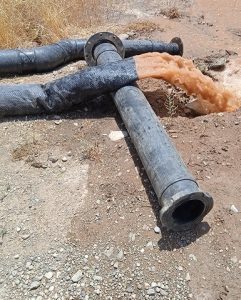Well Development ensures that the well delivers clean and plentiful water for years to come. Our licensed hydrogeologist performs well development using the necessary equipment and expertise to ensure safety and effectiveness. The development process is closely monitored by our experts to ensure that the pumped water becomes progressively clearer and the amount of sand in it decreases steadily. Well development is considered complete when the pumped water is clear free of excessive sand and the water level stabilizes.
Proper good development ensures:
- Increased well yield: By removing sediment that can clog the well screen development maximizes the flow of water into the well.
- Extended well life: A clean well screen reduces wear and tear on the pump and prevents clogging leading to a longer lifespan for your well.
- Improved water quality: Removing sediment reduces the risk of contamination and provides cleaner water.
Where do you need to use well-developed techniques?
Well-development techniques are required in two cases. Firstly drilling fluids used during the drilling process to lubricate the drill bit cool the wellbore and remove cuttings are removed during well development. Secondly these techniques are designed to remove the fine sediment that accumulates near the borehole wall during the descaling process of aged water wells.
Our Development Techniques:
We use two methods for well development – airlift pumping and over-pumping:
- Airlift pumping: Airlifting is the process of pumping air into the water column to displace the water and dislodge any sediment or drilling material that may be on the screen of the well. This process will be repeated along the length of the screen until the hydrogeologist achieves sufficient development. For some wells the tandem of airlifting and swabbing may be enough to fully develop a well. But if there is still a significant volume of sediments and drilling material in the well we may need to pump the well to further develop it.
The advantages of airlifting:
- Debris can be emptied from boreholes at high speed without using cohesive materials like clay.
- High-speed operation
- Low risk of damaging borehole
- Usable in deformed boreholes
Debris can be emptied from boreholes at high speed without using cohesive materials like clay even in deformed boreholes with a low risk of damage.
The disadvantages of airlifting:
- Conducting this operation needs a high water column within the borehole
- This technology needs compressed air
- Over-pumping: The well is pumped at a rate exceeding its normal operating capacity to remove loose sediment.

